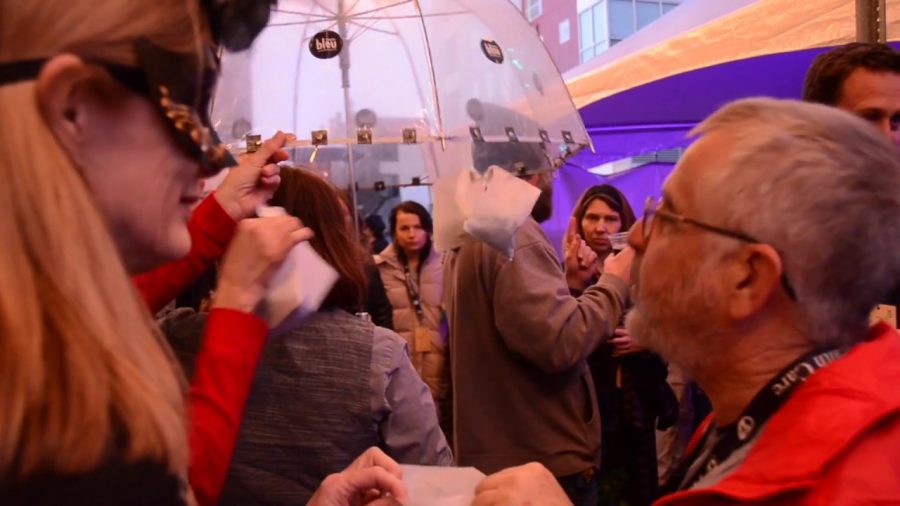Hoping to expose sophomores from RBHS, HHS and BHS to the experience of True/False and the world of documentaries, T/F held a free screening of What Happened, Miss Simone? at the Missouri Theatre Friday, Mar. 6. The film, directed by Liz Garbus, follows Nina Simone through her career, from walking on railroad tracks to get to her piano lessons as a little girl, to singing passionately in the name of civil rights for African Americans.
Although students could choose not to attend the film, which would otherwise cause them to miss first and second block, sophomore Katelyn Greathouse said she was glad she went on the trip because she had never been to a True/False event before. She believes it was a great opportunity to further her knowledge and learn more about influential people in history.
“I thought it was very interesting. We got to learn more about her life and see how she dealt with her problems,” Greathouse said. “She was inspirational [to me] for trying to be active for the civil rights movement.”
After the film, the usual Q&A with the director began, but instead of talking with the crowd in person, she spoke through Skype.

“I think they weren’t ready to let go. They felt for a long time that she had been so misunderstood and misrepresented that they felt worried about putting trust into someone else’s hands,” Garbus said. “When there was a film that was being developed by a director and they cast Zoe Saldana to play Nina Simone and when the family read the script and heard about Nina’s casting, they were so unhappy about it that I think they had to decide to let someone make a documentary to let the real Nina be known, and I happened to be the lucky person at that moment.”
When creating the film and finding the audio clips of Simone’s voice, she said she “really got to know her through her not just through other people” and both loved and become frustrated with her just like how a friend would. Accompanying this friendship was Garbus’s admiration of Simone as a fan of her music and spirit. She believes this relationship between her and Simone was reflected in the documentary. Although she said it was difficult to portray the complexity of a person’s story and thoughts, she believes there is a beauty to telling both sides of her life, whether it be good or bad.
“I make films. I did an intro to Bobby Fisher which played there at True/False, about Marilyn Monroe, about inmates serving life sentences, but at the end of the day, I think all of my films have an interest in the darkness and the glory of the human character,” Garbus said. “Nina Simone was certainly someone whose life was on both of those poles — the absolute glory of achievement, creativity in art, and then darkness in terms of her own depression and mania and also in terms of how difficult she could be with other people and as a mother, and [also being] on the receiving end of that as well.”
Despite the widespread impact Simone had on the world with her political songs, young people of this generation might not have felt the same effect due to her death in 2003. Sophomore Alec Huhman said he enjoyed the film, and found her story interesting to learn about.
“I learned about [Nina Simone, and] I thought it was interesting because I had never heard of her,” Huhman said. “I haven’t been to True/False, [but] some documentaries [like this] are interesting.”
Even though students asked questions ranging from Simone’s life, to the process of making a film, the major takeaway Garbus expressed was the importance Simone still has in today’s world. When John Legend accepted his Oscar, she was the artist he appreciated. Lana Del Rey has a tattoo of her on her arm. Alicia Keys called her a hero and Bob Dylan named her one of the top ten most influential artists.
“We were making this film and editing the last number when things were blowing up where you all are in the streets of Ferguson, MO; the streets that we were working with and had got footage from 50 years before,” Garbus said. “I felt an enormous responsibility to connect those dots that Nina’s work is still very much an ongoing process and Nina bringing it back, things like ‘Mississippi Goddam,’ you know, ‘Missouri Goddam.’ She is still incredibly relevant today. One of the saddest things for me was when Nina said, ‘My civil rights songs aren’t relevant.’ I think we can tell her, ‘Yes they are,’ because her art is all over the world. She had big influence.”
By Grace Vance
Photos by Grace Vance
Categories:
Sophomores treated to a free screening by True/False
March 8, 2015
0
Tags:


















































































